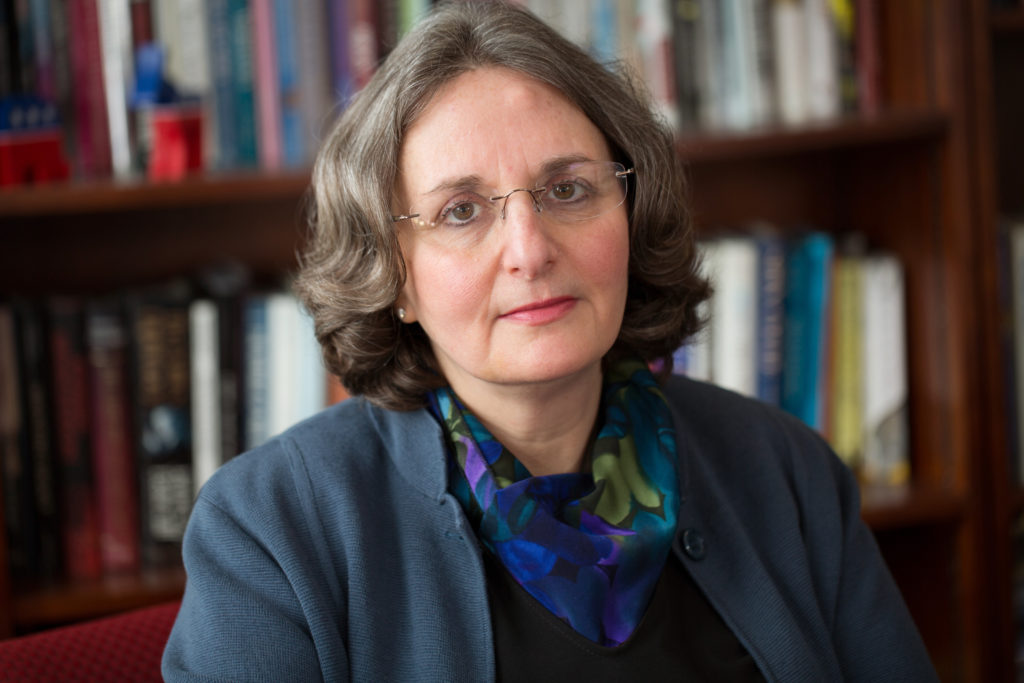After stumbling upon Ken Burns’ award-winning Civil War documentary series as a graduate student in 1989, Nina Seavey said she realized the “amazing” storytelling power of the medium and wanted to pursue it herself.
Since then, she’s created documentaries on topics ranging from bullfighters to the history of the poliovirus, won an Emmy award, earned two additional nominations and collaborated with students and filmmakers from all around the world.
Now, after nearly three decades leading the School of Media and Public Affairs’ Documentary Center, Seavey will step down from her position June 30 to pursue an investigative podcast project about U.S. government surveillance of citizens involved in anti-Vietnam War protests. Seavey said her proudest accomplishment during her decades-long tenure heading the center is the opportunity she had to teach her students how to become skilled documentarians.
“You don’t need to go to film school to be a documentarian,” Seavey said. “What you need is really great mentorship. And I think that what we’ve done is to mentor filmmakers in a way that is really part of a lifelong journey.”
Seavey said that while at the center’s helm, she created a six-month “intensive” certificate program to teach students documentary production and storytelling techniques. She said she designed the program to carve out a niche for SMPA among peer institutions like the University of Southern California and New York University, which offer only a master’s of fine arts degree in filmmaking.
Seavey said she also created fellowships for emerging foreign filmmakers to allow students to collaborate with aspiring documentarians from countries like Bangladesh and Kyrgyzstan. The program, supported by two U.S. Department of State grants in 2008 and 2010, allowed about 450 students who participated in the program to act as “ambassadors” to “open the hearts and minds” of worldwide audiences.
“Twenty filmmakers got together over a six-week period, lived here on campus and made films together, went back to their home countries and changed the world,” Seavey said.
Seavey said she will stay on as executive producer for GW’s bicentennial film, which will showcase University accomplishments over the past 200 years. GW will observe its bicentennial anniversary with a yearlong celebration kicking off in February 2021.
She said she wants to use the documentaries as a way to highlight academic departments and bring the University community together. Academic heads from departments like biostatistics approached her asking her to “tell stories about what we do,” she said.
“We can help you with that because everybody in a university has a story about their work, about their research, about how they’re changing their field, what are they contributing to their cannon,” Seavey said.
Seavey said the documentary center has yet to name a new leader, adding that she does not want to influence the decision and wants to let the new director lead the program according to their own vision. But she added that she intends to answer any questions that officials involved with selecting the new director have about the center to ensure the transition process is as “smooth” as possible.
“Now it’s up to somebody else to really put their paw print in it and say, ‘This is mine,’” Seavey said. “Because, right now, it’s so much a reflection of my strengths, and I avoid the things that are my weaknesses. I can’t say how it should look, except that I hope it takes the form of somebody else’s good strengths.”
SMPA faculty said Seavey has been an “excellent” role model for students interested in becoming documentarians, and the next director of the center has “big shoes to fill.”
Outgoing SMPA Director Frank Sesno said Seavey brought a “rigorous” type of documentary filmmaking to the institute and taught students how to “go the extra mile” when shooting film and interviewing hard-to-reach sources.
“When it’s all said and done, you can point to where somebody comes to life in your film, where an issue or an experience becomes poignant and powerful, and you can stand back and just be intensely proud of having created that experience for your audience,” Sesno said.
Sesno added that quantifying the importance of documentary filmmaking can sometimes be difficult but Seavey’s teaching has given rise to the next generation of documentarians.
“Measuring impact in long-form storytelling and documentary is always a challenge, but in this case, it’s pretty simple – educating successive generations of aspiring filmmakers, and that’s something to be very proud of,” Sesno said. “The students who have experienced the institute have been able to, at the end of that experience, know that they’ve created something unique and special.”
David Karpf, SMPA’s associate director, said Seavey is a “force of nature” who had a “real impact” on both the media and public affairs school and the larger field of documentary.
Karpf said Seavey effectively challenged her students and imparted her years of knowledge and experience to the next generation of documentarians.
“She’s been a role model in how to build an intensive educational experience that demands and produces excellence,” Karpf said.





